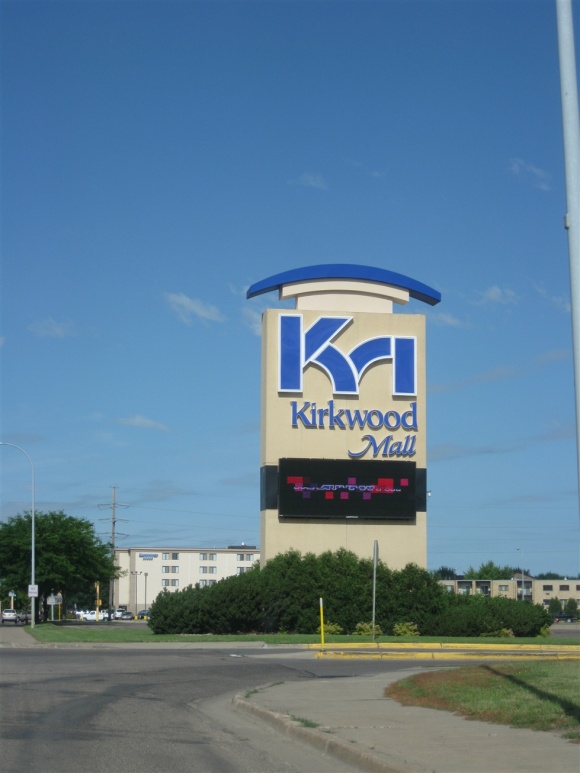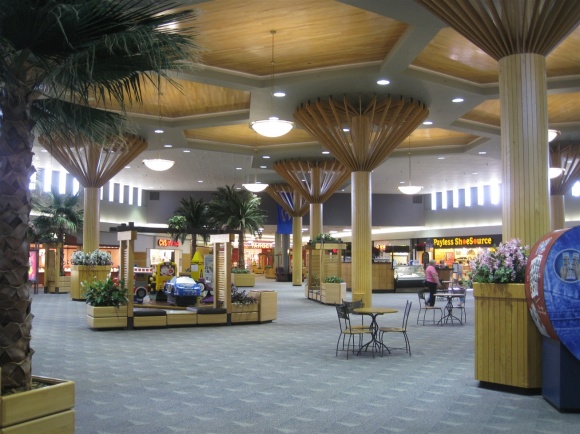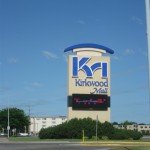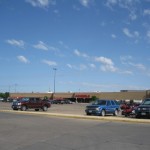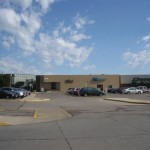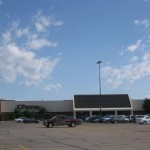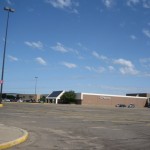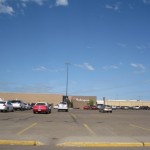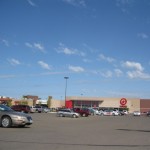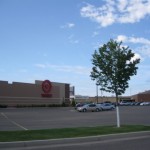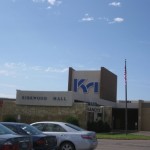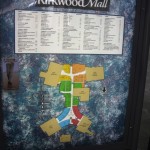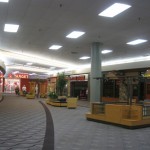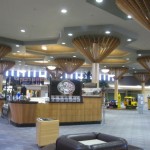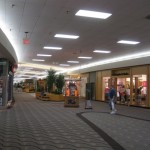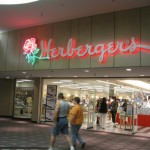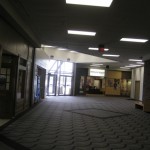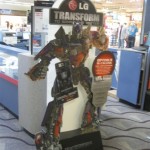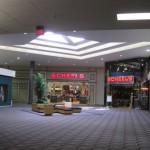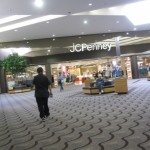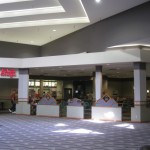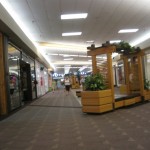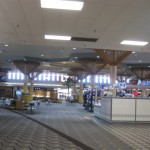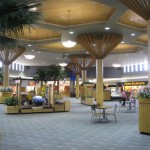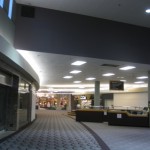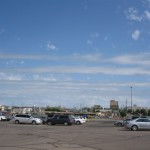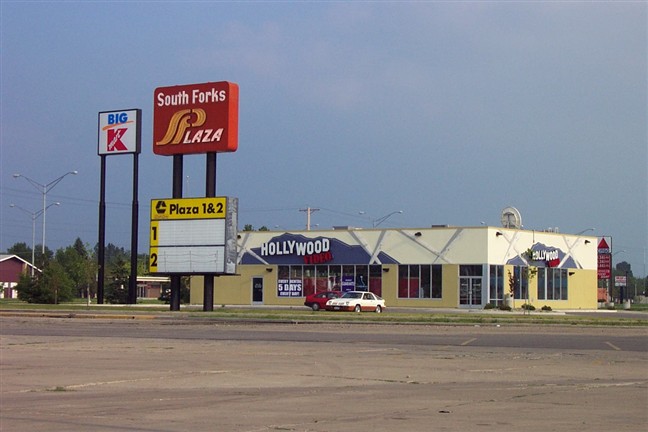Bismarck is a city of 55,000 people and also the state capital of North Dakota. Located almost 200 miles from the state’s largest city, Fargo, and over 400 miles from the Twin Cities of Minneapolis and St. Paul, Bismarck is rather isolated from other cities and is therefore an important regional hub for commerce. As such, a plethora of retail options exist in the city, including two enclosed malls, the large, super-regional Kirkwood Mall and the smaller, semi-troubled Gateway Mall.
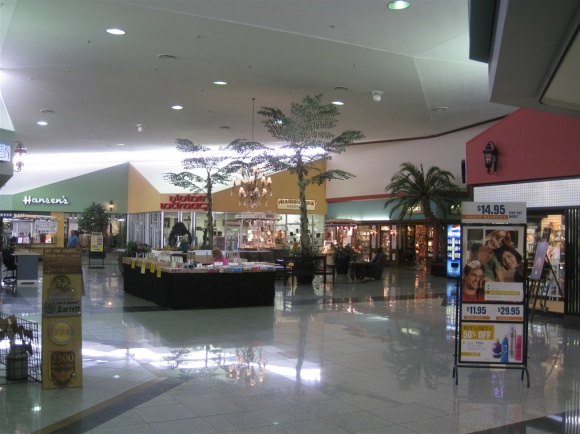 Eight years after Bismarck’s largest mall, Kirkwood Mall, opened, developers decided the city could use another, smaller mall and built Gateway Mall on Bismarck’s north side. Opened in September 1979, Gateway Mall debuted a year before Kirkwood Mall’s 1980 expansion, and anchors the State Street/U.S. 83 North retail corridor in the city. It was developed by the local Kavaney family for the low, low price of $8 million. Listed at 334,000 square feet, Gateway Mall is one level and opened with three anchors: Sears, Bismarck-based A.W. Lucas department store, and Jamestown, N.D.-based White Mart, a discounter. In addition to these anchors, Gateway Mall also had the Midco Theater, a three-screen multiplex which was later expanded to eight screens.
Eight years after Bismarck’s largest mall, Kirkwood Mall, opened, developers decided the city could use another, smaller mall and built Gateway Mall on Bismarck’s north side. Opened in September 1979, Gateway Mall debuted a year before Kirkwood Mall’s 1980 expansion, and anchors the State Street/U.S. 83 North retail corridor in the city. It was developed by the local Kavaney family for the low, low price of $8 million. Listed at 334,000 square feet, Gateway Mall is one level and opened with three anchors: Sears, Bismarck-based A.W. Lucas department store, and Jamestown, N.D.-based White Mart, a discounter. In addition to these anchors, Gateway Mall also had the Midco Theater, a three-screen multiplex which was later expanded to eight screens.
Only half the size of Kirkwood Mall across town, Gateway Mall has been plagued with periods of vacancy, beginning almost right away with the closure of anchor A.W. Lucas not long after the mall opened. Minnesota-based Herberger’s department store, which already operated a small store at Kirkwood Mall, decided to take the former Lucas lease and have two stores in Bismarck. This strategy worked until 1994, when the Herberger’s at Kirkwood Mall expanded to 92,000 square feet, reducing the need for two stores in the market. As a result, Herberger’s closed their Gateway Mall store, and the space sat either underused or vacant for the next ten years. For a period until 1997 it was operated as deep-discounter Jacobs Trading Company and World’s Greatest Deals, but from 1997-2004 was totally vacant before Billings, Montana-based Conlin’s Furniture moved in. Unfortunately, though, the space vacated again in 2009, as Conlin’s moved to a new, freestanding location; however, in 2010 deep-discounter Famous Labels moved in.
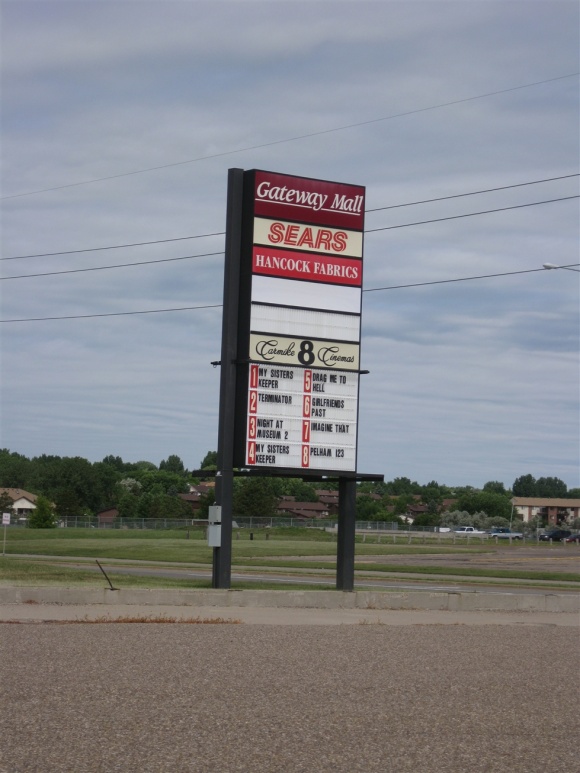 Tenancy problems have also plagued the food court and another Gateway Mall anchor. White Mart, which opened with the mall in 1979, was closed in 1986 after parent company Thrifty White chose to focus on its drug store locations rather than discount department stores. It was replaced by Menards, which has since relocated after building a new, freestanding store north of the mall in 1999. Shortly after the departure of Menards, the space was subdivided into a “Medical Mall” for PrimeCare and a Hancock Fabrics. Curiously, competitor Jo-Ann Fabrics also operates in the mall. That’s a lot of fabric.
Tenancy problems have also plagued the food court and another Gateway Mall anchor. White Mart, which opened with the mall in 1979, was closed in 1986 after parent company Thrifty White chose to focus on its drug store locations rather than discount department stores. It was replaced by Menards, which has since relocated after building a new, freestanding store north of the mall in 1999. Shortly after the departure of Menards, the space was subdivided into a “Medical Mall” for PrimeCare and a Hancock Fabrics. Curiously, competitor Jo-Ann Fabrics also operates in the mall. That’s a lot of fabric.
Gateway Mall’s food court, which at one time featured Orange Julius, Papa D’s Pizza, and Taco Tina’s, is now down to only a Subway featuring limited hours, probably to feed the lunch crowd at the Medical Mall. Other dining options within the mall include longtime tenant Rock’n 50’s Cafe, Mocha Momma’s coffee shop, and Chinatown Buffet.
From 2003 to 2006, Gateway Mall was sold three times, and current owner Raymond Arjmand promised to infuse life into the center. Under his direction, the mall was renamed Gateway Fashion Mall and a new coat of bright, multicolored paint was slapped onto some of the mall’s facades. More retailers such as current off-price discounter Famous Labels could help in establishing Gateway ‘Fashion’ Mall as a destination for discount shopping, like the Foothills Mall in Tucson, for example.
Other recent problems with Gateway Mall include the departure of inline stores CVS (formerly Osco Drug until 2006), Hansen’s Menswear and Joy’s Hallmark, all in 2009. Joy’s is a contentious departure, as the owner filed a suit against Gateway Mall’s current owner, Raymond Arjmand, alleging insurance fraud, racketeering and bilking tenants inappropriately. Arjmand is also under suit for malls he owns in Woodland and Lancaster, California, under the exact same allegations.
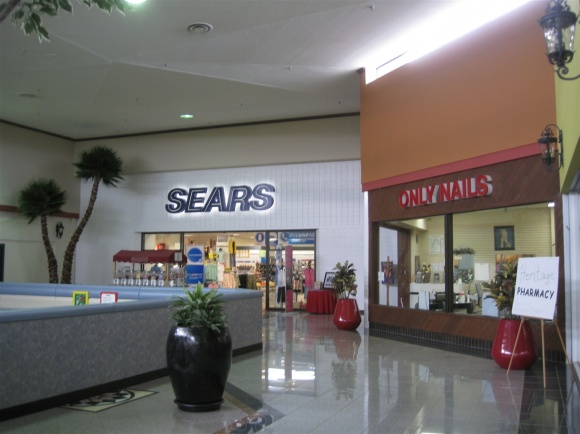 Currently, Sears, an original anchor at Gateway Mall since 1979, and a handful of stores exist within the mall. Vacancy is currently at one of the highest levels since the mall opened, though the arrival of Famous Labels in 2010 helped somewhat to ameliorate the problem. Even so, the stores which have left recently represent long-time tenants, and their allegations of fraud on the part of the mall’s current owner definitely casts a pall upon the mall. Hopefully, the situation will work out for the best, and Gateway Mall will continue to provide an climate-controlled shopping environment as an ancillary alternative to the larger Kirkwood Mall.
Currently, Sears, an original anchor at Gateway Mall since 1979, and a handful of stores exist within the mall. Vacancy is currently at one of the highest levels since the mall opened, though the arrival of Famous Labels in 2010 helped somewhat to ameliorate the problem. Even so, the stores which have left recently represent long-time tenants, and their allegations of fraud on the part of the mall’s current owner definitely casts a pall upon the mall. Hopefully, the situation will work out for the best, and Gateway Mall will continue to provide an climate-controlled shopping environment as an ancillary alternative to the larger Kirkwood Mall.
Elsewhere on the ‘net: Mall-Hall-of-Fame’s write-up of Gateway Mall, a local Bismarck resident’s history of the mall, and his Flickr page of additional photos.
We visited Gateway Mall in July 2009 and took the pictures featured here. Familiar with Gateway Mall or the retail scene in North Dakota? Feel free to leave some comments.
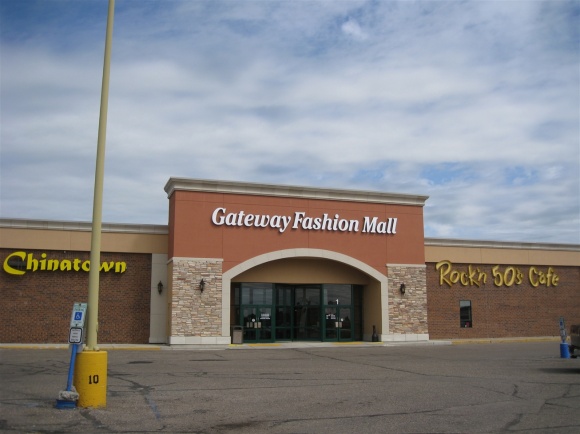 Eight years after Bismarck’s largest mall, Kirkwood Mall, opened, developers decided the city could use another, smaller mall and built Gateway Mall on Bismarck’s north side. Opened in September 1979, Gateway Mall debuted a year before Kirkwood Mall’s 1980 expansion, and anchors the State Street/U.S. 83 North retail corridor in the city. It was developed by the local Kavaney family for the low, low price of $8 million. Listed at 334,000 square feet, Gateway Mall is one level and opened with three anchors: Sears, Bismarck-based A.W. Lucas department store, and Jamestown, N.D.-based White Mart, a discounter. In addition to these anchors, Gateway Mall also had the Midco Theater, a three-screen multiplex which was later expanded to eight screens.
Eight years after Bismarck’s largest mall, Kirkwood Mall, opened, developers decided the city could use another, smaller mall and built Gateway Mall on Bismarck’s north side. Opened in September 1979, Gateway Mall debuted a year before Kirkwood Mall’s 1980 expansion, and anchors the State Street/U.S. 83 North retail corridor in the city. It was developed by the local Kavaney family for the low, low price of $8 million. Listed at 334,000 square feet, Gateway Mall is one level and opened with three anchors: Sears, Bismarck-based A.W. Lucas department store, and Jamestown, N.D.-based White Mart, a discounter. In addition to these anchors, Gateway Mall also had the Midco Theater, a three-screen multiplex which was later expanded to eight screens.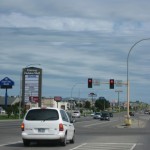
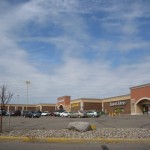
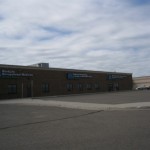
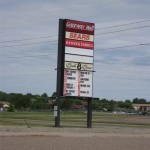
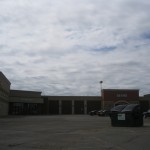
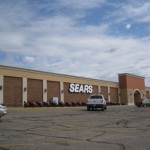
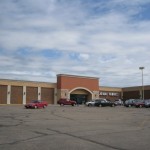
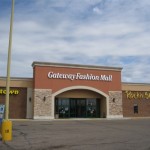
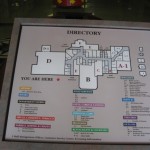
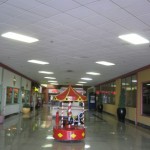
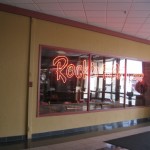

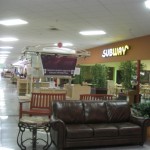
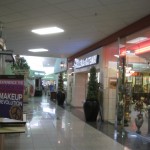
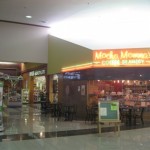
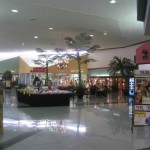
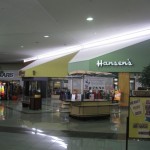
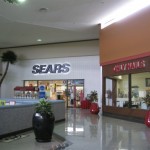
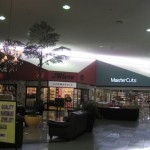
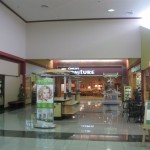
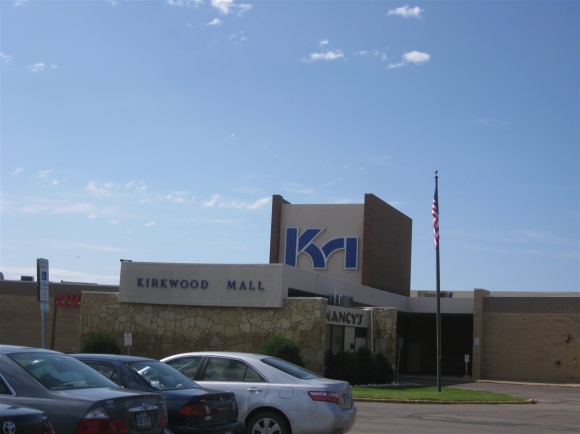 The largest mall in Bismarck, Kirkwood Mall, opened in 1971. Original anchors were Montgomery Ward, Minnesota-based Herberger’s, and a massive 130,000 square-foot Woolworth’s. Some have stated this location was Woolco, but a photo provided by the blog Mall Hall of Fame, from the State Historical Society of North Dakota Archives, illustrates that it was Woolworth. Did it become Woolco at some point before the Woolco chain died? What is the source of the confusion?
The largest mall in Bismarck, Kirkwood Mall, opened in 1971. Original anchors were Montgomery Ward, Minnesota-based Herberger’s, and a massive 130,000 square-foot Woolworth’s. Some have stated this location was Woolco, but a photo provided by the blog Mall Hall of Fame, from the State Historical Society of North Dakota Archives, illustrates that it was Woolworth. Did it become Woolco at some point before the Woolco chain died? What is the source of the confusion?